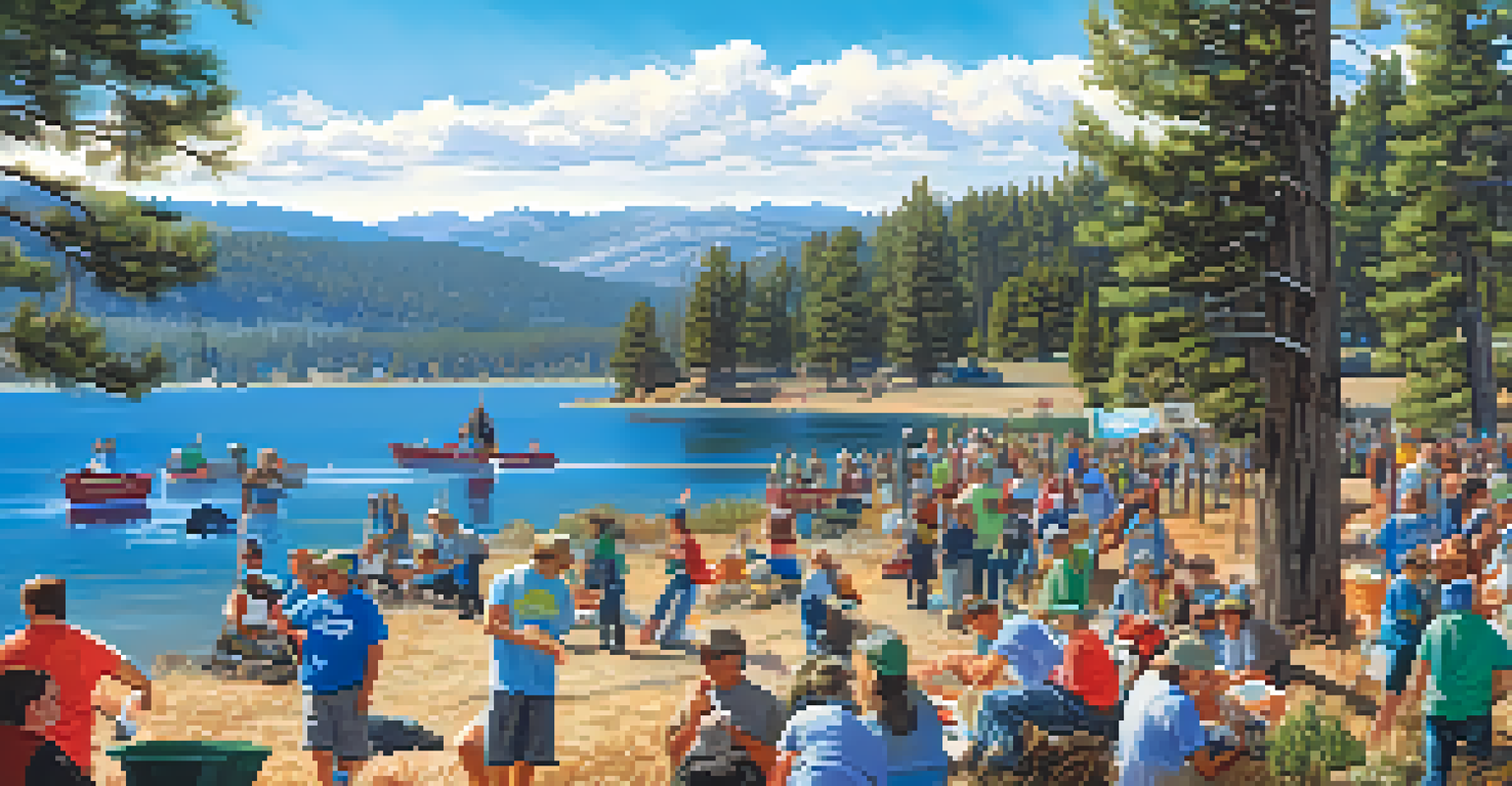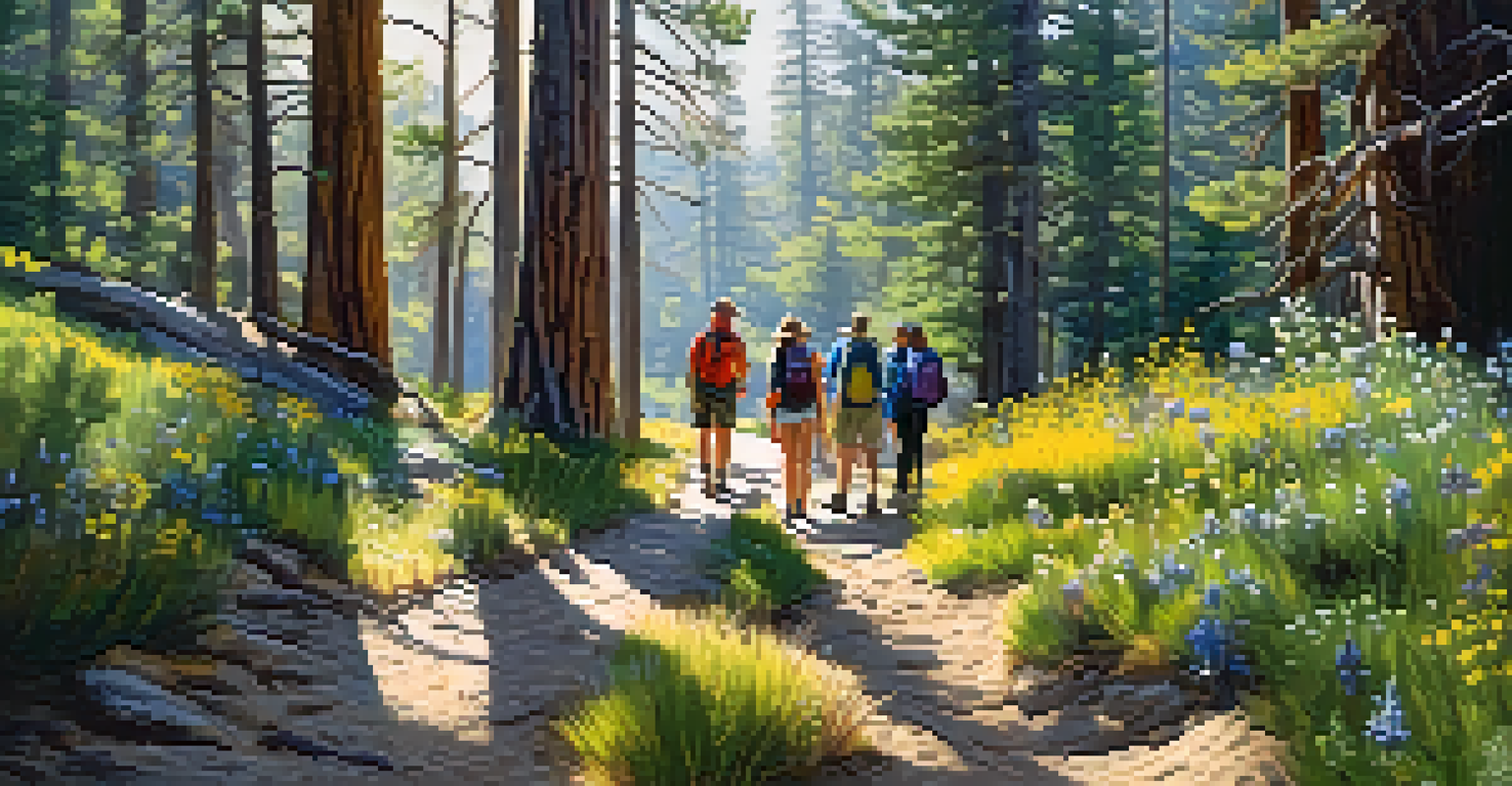Local Organizations Championing Nature Conservation in Big Bear

Introduction to Nature Conservation in Big Bear
Big Bear Lake, known for its stunning landscapes and vibrant wildlife, is a treasure trove of natural beauty. However, this environment faces challenges from urban development and climate change. Local organizations play a pivotal role in ensuring that this natural habitat is preserved for future generations.
In every walk with nature one receives far more than he seeks.
Nature conservation is not just about protecting land; it’s about fostering a sense of community. Residents and visitors alike can engage with these organizations to learn about sustainable practices, volunteer opportunities, and educational programs. Together, they create a culture of appreciation and stewardship towards the local ecosystem.
In this article, we’ll explore some of the dedicated local organizations championing nature conservation in Big Bear. From environmental education to hands-on restoration projects, these groups exemplify the power of community involvement in protecting our planet.
The Big Bear Lake Eco-Action Network
The Big Bear Lake Eco-Action Network is a grassroots organization dedicated to promoting sustainable practices in the region. Their initiatives include community clean-up events and educational workshops on reducing waste and conserving water. By involving local residents, they create a strong sense of ownership and responsibility towards the environment.

One notable project is their annual Earth Day celebration, which draws hundreds of community members. This event features educational booths, activities for children, and opportunities for residents to take direct action, like planting trees and cleaning local beaches. It’s a powerful reminder of how collective efforts can lead to significant environmental improvements.
Community Drives Conservation Efforts
Local organizations in Big Bear engage residents through volunteer opportunities and educational programs, fostering a culture of environmental stewardship.
The Eco-Action Network also collaborates with local schools to incorporate environmental education into the curriculum. By instilling eco-consciousness in the younger generation, they ensure that the community's commitment to conservation continues to grow.
The Bear Valley Trails Foundation
The Bear Valley Trails Foundation focuses on maintaining and enhancing the extensive trail system in the Big Bear area. They recognize that trails not only provide recreational opportunities but also serve as vital habitats for local wildlife. Their work helps to ensure that these trails remain accessible and environmentally friendly.
The Earth does not belong to us: we belong to the Earth.
Volunteers play a crucial role in the foundation’s efforts, participating in trail maintenance days and habitat restoration projects. These hands-on activities foster a deeper connection between the community and the land, as participants see the tangible results of their efforts. It's a fulfilling way to give back while enjoying the beautiful scenery.
In addition to trail upkeep, the foundation organizes educational hikes that highlight local flora and fauna. These guided tours help to raise awareness about the importance of preserving biodiversity while also encouraging healthy outdoor activities.
The Big Bear Nature Discovery Center
The Big Bear Nature Discovery Center serves as a hub for environmental education and conservation awareness. Located in the heart of Big Bear, the center offers a range of programs for all ages, from interactive exhibits to guided nature walks. It’s an inviting space where locals and tourists can learn about the area’s unique ecosystems.
One popular program is the 'Nature Explorers' series, designed for children to engage with nature through hands-on activities and games. These educational experiences help instill a lifelong appreciation for the environment, encouraging the next generation to become stewards of nature.
Wildlife Rehabilitation is Vital
Organizations like the Big Bear Alpine Zoo play a crucial role in rescuing and rehabilitating injured wildlife, raising awareness about conservation challenges.
The center also collaborates with local conservation groups to host events and workshops, creating a network of support for various initiatives. This collaboration amplifies the impact of conservation efforts and fosters a sense of community involvement.
Wildlife Rehabilitation and Conservation Efforts
Wildlife rehabilitation is an essential aspect of nature conservation in Big Bear. Local organizations like the Big Bear Alpine Zoo focus on rescuing and rehabilitating injured or orphaned animals. This work not only helps individual animals but also contributes to the preservation of local wildlife populations.
The zoo often provides educational programs highlighting the importance of wildlife conservation. Visitors can learn about the challenges faced by local species and how they can help protect their habitats. These programs play a critical role in raising awareness and fostering a deeper understanding of wildlife issues.
Furthermore, collaborations with wildlife experts and researchers enhance conservation efforts. By sharing knowledge and resources, these organizations can implement more effective strategies to support the region's wildlife.
Community Involvement and Volunteer Opportunities
Community involvement is the backbone of nature conservation in Big Bear. Many local organizations rely on volunteers to help with various projects, from habitat restoration to educational outreach. This collaborative spirit empowers residents to take an active role in preserving their environment.
Volunteering not only contributes to conservation efforts but also fosters connections among community members. Participants often share their experiences and insights, creating a network of like-minded individuals who are passionate about protecting nature. This camaraderie can lead to lifelong friendships and a shared commitment to sustainability.
Challenges Threaten Natural Beauty
Urbanization, climate change, and limited funding pose significant threats to nature conservation efforts in the Big Bear area.
Events like volunteer days and workshops are great opportunities for individuals and families to get involved. They offer a chance to learn new skills, engage with nature, and make a positive impact on the community.
Challenges Facing Nature Conservation in Big Bear
Despite the commendable efforts of local organizations, nature conservation in Big Bear faces several challenges. Urbanization and climate change pose significant threats to the region's ecosystems. As more people flock to the area for its natural beauty, the pressure on local resources continues to grow.
Additionally, funding for conservation projects can be limited. Many organizations rely on grants and donations, making it crucial for the community to support their initiatives. Increased public awareness and involvement can help secure the necessary resources to continue important conservation work.

Another challenge is the need for ongoing education about conservation practices. Engaging the community in discussions about sustainability and encouraging eco-friendly behaviors are vital steps towards protecting Big Bear's natural environment.
Conclusion: The Future of Conservation in Big Bear
The future of nature conservation in Big Bear relies on the collective efforts of local organizations and community members. By working together, they can address the challenges facing the region and ensure the preservation of its stunning landscapes and diverse wildlife. Every small action contributes to a larger goal of sustainability.
As awareness grows, more individuals are stepping up to support conservation initiatives. Whether through volunteering, attending educational events, or simply spreading the word, everyone can play a part in safeguarding Big Bear's natural beauty.
In conclusion, the commitment to nature conservation in Big Bear is a testament to the power of community. By championing local organizations and participating in their efforts, residents can help create a lasting legacy of environmental stewardship.